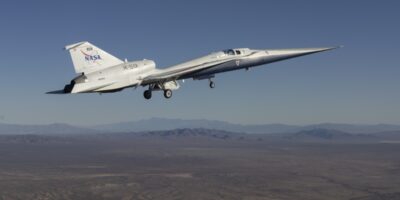Exploring Space: An Informative Journey
Space has intrigued humanity for centuries. Looking up at the stars has prompted numerous questions about our universe. What is out there? How did it all begin? Let’s dive into the vast expanse of space and uncover its many facets.
The Origins of the Universe
The universe is believed to have begun with the Big Bang around 13.8 billion years ago. This event marked the birth of all matter and energy. Scientists theorize that the universe started from a singularity, a point of infinite density and temperature. As it expanded, it cooled, allowing the formation of subatomic particles and later atoms. Galaxies began to form as matter clumped together under the force of gravity.
The Big Bang Theory
Evidence supporting the Big Bang theory includes the observed expansion of the universe. Edwin Hubble’s observations showed that galaxies are moving away from each other. Another key piece of evidence is the cosmic microwave background radiation, the afterglow of the Big Bang, detected by radio telescopes.
Galaxies and Their Types
Galaxies are vast collections of stars, gas, dust, and dark matter. Over 100 billion galaxies populate the observable universe. They come in various shapes and sizes, classified mainly into three categories:
- Spiral Galaxies: These galaxies, including our Milky Way, have distinct spiral arms winding out from a central bulge.
- Elliptical Galaxies: More rounded and featureless, ranging from nearly spherical to elongated shapes.
- Irregular Galaxies: Lack a defined shape and structure, often resulting from gravitational interactions.
Stars: The Building Blocks of Galaxies
Stars are massive, luminous spheres of plasma. They generate energy through nuclear fusion, converting hydrogen into helium. This process releases immense energy, enabling stars to shine for billions of years. Stars form in nebulae, large clouds of gas and dust, through gravitational collapse.
The Lifecycle of Stars
- Protostar: The initial stage of star formation where gravity pulls gas together.
- Main Sequence: Stars spend most of their lives in this stable phase harmonizing nuclear fusion.
- Red Giant or Red Supergiant: Stars expand after exhausting hydrogen in their cores.
- Final Stages: Stars end as white dwarfs, neutron stars, or black holes, depending on their initial mass.
Our Solar System
Our solar system resides in the Milky Way galaxy. It consists of the Sun, eight planets, dwarf planets, and countless smaller objects. The Sun, a star at the center, accounts for 99.8% of the solar system’s total mass.
The Planets
Planets are categorized into two groups:
- Terrestrial Planets: Mercury, Venus, Earth, and Mars. Characterized by their rocky surfaces.
- Gas Giants and Ice Giants: Jupiter and Saturn are gas giants, mainly composed of hydrogen and helium. Uranus and Neptune are ice giants with more water, ammonia, and methane.
Space Exploration
Humanity’s curiosity has led to numerous missions exploring space. From launching satellites to landing on the Moon, space exploration continues to push boundaries.
The Space Race
The Cold War era marked significant strides in space exploration. The United States and the Soviet Union vied for dominance. The Soviet Union launched the first artificial satellite, Sputnik, in 1957. The U.S. responded with the Apollo missions, achieving the historic moon landing in 1969.
International Space Station (ISS)
Launched in 1998, the ISS represents a global effort in space research. It orbits Earth and serves as a laboratory for scientific experiments. Numerous countries collaborate, showcasing a combined drive for progress.
Modern Space Missions
Commercial companies and space agencies continue to make headlines. Innovations ensure that exploration reaches new heights.
Mars Exploration
Mars has always captivated with its potential for past or present life. Rovers like Spirit, Opportunity, Curiosity, and Perseverance have explored its surface. These rovers collect data to understand Martian geology and climate and assess potential for human habitation.
James Webb Space Telescope
The James Webb Space Telescope (JWST) is the latest advancement in observing the universe. It is set to surpass the Hubble Space Telescope, offering unprecedented views of distant stars, galaxies, and exoplanets. Equipped with advanced instruments, the JWST aims to study the universe’s history, from the Big Bang to the formation of solar systems.
Astrophysics and Cosmology
Astrophysics and cosmology delve into the fundamental nature of the universe. Astrophysics studies the behavior of celestial objects and the processes that govern them. Cosmology focuses on the universe’s origin, evolution, and ultimate fate.
Dark Matter and Dark Energy
These are among the most profound mysteries in astrophysics. Dark matter, constituting about 27% of the universe, does not emit, absorb, or reflect light. Scientists infer its presence from gravitational effects on visible matter. Dark energy, making up about 68% of the universe, drives its accelerated expansion. Its exact nature remains unknown.
Black Holes
Black holes are regions of space where gravity is so strong that nothing, not even light, can escape. They form from the remnants of massive stars after a supernova. The event horizon marks the boundary beyond which nothing can return. Scientists study black holes to understand the limits of physics and the nature of spacetime.
Astronomical Phenomena
Space is home to many fascinating phenomena. These events and objects continue to captivate scientists and the public alike.
Supernovae
A supernova is an explosion marking the death of a massive star. It is incredibly bright and can outshine entire galaxies for a short period. Supernovae play a crucial role in dispersing elements throughout the universe, enriching the interstellar medium.
Neutron Stars and Pulsars
A neutron star is the dense core left behind after a supernova. Composed almost entirely of neutrons, it is incredibly dense. If the neutron star emits beams of radiation, it becomes a pulsar. As it rotates, these beams sweep across space, resembling a lighthouse beam.
Living in Space
With advancing technology, the possibility of living in space is becoming more realistic. Studies aim to understand how humans can adapt to the harsh conditions.
The Human Body in Space
Microgravity affects the human body in various ways. Bone density decreases, muscles atrophy, and fluids shift toward the head. Astronauts exercise regularly to mitigate these effects. Long-duration missions require solutions to sustain human health and performance.
Space Habitats
Future missions envision building habitats beyond Earth. Concepts range from lunar bases to Mars colonies. These habitats must provide life support, shielding from cosmic radiation, and sustainable living conditions.
Space Tourism
Commercial ventures are paving the way for space tourism. Companies like SpaceX and Blue Origin aim to offer suborbital and orbital flights for private individuals. These efforts democratize access to space and inspire a new generation of space enthusiasts.
The Future of Space Exploration
The future holds immense potential. New technologies and international cooperation promise exciting discoveries. Approaches like space mining, interstellar travel, and artificial colonies drive the vision forward.
Space Mining
Mining resources from asteroids offers potential economic and technological benefits. Water, precious metals, and other materials can be extracted, supporting both space missions and Earth-based industries.
Interstellar Travel
Reaching other star systems remains a monumental challenge. Concepts like the Breakthrough Starshot aim to send small probes to Alpha Centauri using light sails. This project represents the first step towards interstellar exploration.
Artificial Colonies
Building megastructures like space stations and rotating habitats could provide new homes for humanity. Concepts inspired by science fiction are being seriously considered as population and resource pressures grow on Earth.
Space is vast and full of mysteries. Each discovery answers old questions and spawns new ones. Our journey into space has only just begun, and the future promises even more exciting adventures and revelations.
“`



